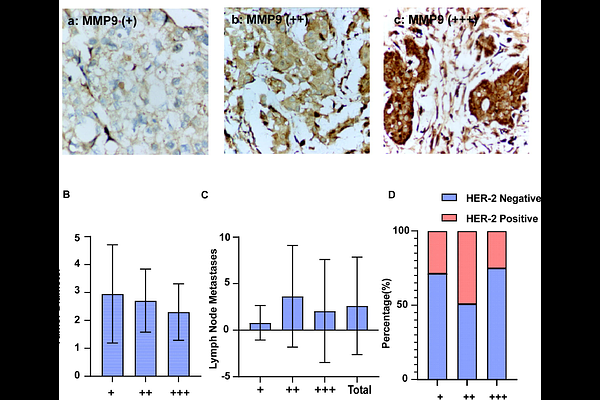Circulating tumor cell heterogeneity and MMP9 expression in clinical correlation with breast cancer

Circulating tumor cell heterogeneity and MMP9 expression in clinical correlation with breast cancer
Yi, M.; Sun, C.; Liang, M.; Liu, J.; Wei, J.; Long, J.; Zhao, H.; Liu, S.; Tang, M.; Mo, Z.; Li, X.; Yin, Y.
AbstractPurpose: This study aimed to investigate the association between the heterogeneity of circulating tumor cell (CTC) subtypes and the expression patterns of matrix metalloproteinase 9 (MMP9) with clinicopathological parameters in breast cancer patients. The distribution of CTC subtypes, MMP9 expression levels, and their influence on tumor progression were further explored. Methods: A total of 303 breast cancer patients were enrolled in this study, and the analysis of circulating tumor cells (CTCs) and their subtypes in peripheral blood was integrated with the assessment of matrix metalloproteinase 9 (MMP9) expression. Results: The number of mesenchymal CTCs increased significantly with the number of lymph node metastases (P < 0.05), and high MMP9 expression was positively correlated with lymph node involvement (P < 0.05). The proportion of intermediate to high MMP9 expression was significantly higher in mixed CTCs compared to epithelial and mesenchymal CTCs (P < 0.05). High MMP9 expression in tumor tissues was associated with increased CTCs production and induction of epithelial-mesenchymal transition (EMT) (P < 0.05), as well as an elevated number of MMP9-positive CTCs (P < 0.05). Conclusions: These findings suggest that MMP9 may promote CTC shedding and the EMT process by degrading the extracellular matrix.